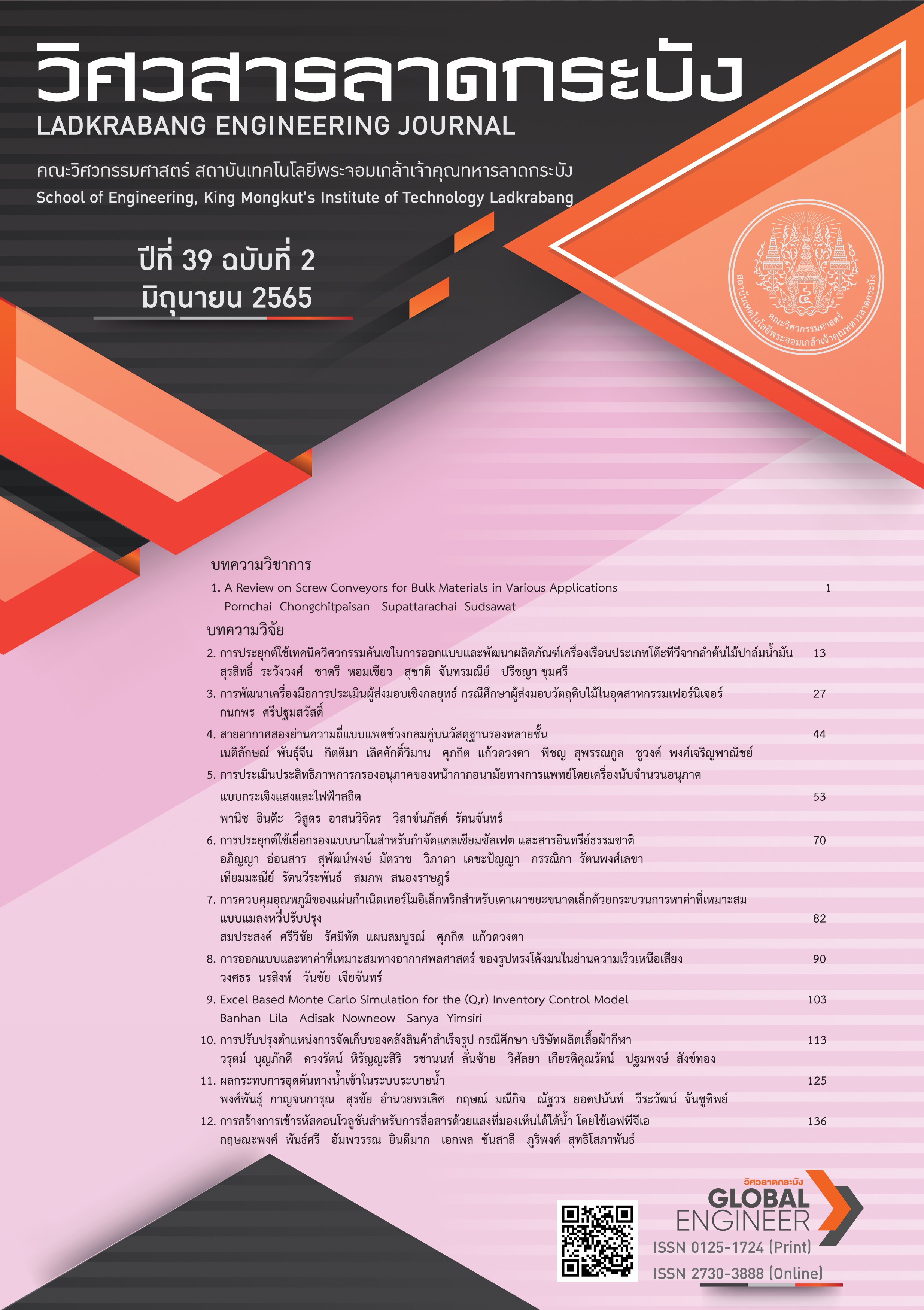Temperature Control of Thermoelectric Generators for Small Incinerators With Modified Fruit Fly Optimization Algorithm (MFOA)
Keywords:
Thermoelectric, Incinerators, Optimization Algorithm, Modified Fruit Fly Optimization Algorithm (MFOA), Internet of ThingsAbstract
This paper presents the application of thermoelectric generator (TEG) plates for converting the thermal energy generated by the incinerator into electrical energy for utilization and a modified fruit fly optimization algorithm (MFOA) is employed to control the cooling system on the cold side of the thermoelectric generator plates. This energy conversion system consists of a thermoelectric generator plate, thermocouple, cooling system, voltage sensor, and microcontroller. From the implementation results, it was found that a modified fruit fly optimization algorithm can be used to control the cooling on the cold side surface to achieve the maximum temperature difference on both surfaces. The energy conversion system can generate electrical energy with a voltage of 18 V, a current of 0.85 A, at a temperature difference on both surfaces of 128oC. Moreover, the data of this energy conversion will be recorded on the database with the internet of things (IoT) communication.
References
V. Sastraphichanthavee, “Energy and Environment,” Air Conditioning Engineering Association of Thailand, No 16, pp. 1–13, 2001.
Department of Alternative Energy Development and Efficiency, “Thailand Renewable Energy Report,” Ministry of Energy, Bangkok, Thailand, Final Rep., 2014.
C. Cekdin, Z. Nawawi and M. Faizal, “The Usage of Thermoelectric Generator as a Renewable Energy Source,” TELKOMNIKA Telecommunication, Computing, Electronics and Control, vol. 18, no. 4, pp. 2186–2192, 2020, doi: 10.12928/TELKOMNIKA.v18i4.13072.
S. LeBlanc, “Thermoelectric Generators: Linking Material Properties and Systems Engineering for Waste Heat Recovery Applications,” Sustainable Materrials and Technologies, vol. 1–2, pp. 26–35, 2014, doi: 10.1016/j.susmat.2014.11.002.
T. J. Hendricks, N. K. Karri, T. P. Hogan and C. J. Cauchy, “New Perspectives in Thermoelectric Energy Recovery System Design Optimization,” Journal of Electronic Materials, vol. 42, pp. 1725–1736, 2013, doi: 10.1007/s11664-012-2406-x.
I. Johnson, W. T. Choate and A. Davidson, “3.0 Waste Heat Recovery Options and Technologies” in Waste Heat Recovery. Technology and Opportunities US Industry, Laurel, MD, USA: BCS, Inc, 2008, ch. 3, sec. 3.4, pp. 25–29.
P. Yodovard, J. Khedari and J. Hirunlabh, “The Potential of Waste Heat Thermoelectric Power Generation from Diesel Cycle and Gas Turbine Cogeneration Plants,” Energy Sources, vol. 23, no. 3, pp. 213–224, 2001, doi: 10.1080/00908310151133889.
X. Ma, G. Shu, H. Tian, H. Yang and T. Chen, “Optimization of Length Ratio Segmented Thermoelectric Generators for Engine’s Waste Heat Recovery,” Energy Procedia, vol. 158, pp. 583–588, 2019, 10.1016/j.egypro.2019.01.157.
M. A. Zoui, S. Bentouba, J. G. Stocholm and M. Bourouis, “A Review on Thermoelectric Generators: Progress and Applications,” Energies, vol. 13, no. 14, pp. 1–32, 2020, 10.3390/en13143606.
J. C. Bass, N. B. Elsner, F. A. Leavitt, “Performance of the 1 kW Thermoelectric Generator for Diesel Engines,” Proc.the AIP Conference, Melville, NY, USA, 1994, pp. 295298, doi: 10.1063/1.46818.
Z. G. Shen, L. L. Tian and X. Liu, “Automotive Exhaust Thermoelectric Generators: Current Status, Challenges and Future Prospects,” Energy Conversion and Management, vol. 195, pp. 1138–1173, 2019, doi: 10.1016/j.enconman.2019.05.087.
A. D. Schlichting, S. R. Anton and D. J. Inman, “Motorcycle Waste Heat Energy Harvesting,” in Proc. the International Symposium on: Smart Structures and Materials & Nondestructive Evaluation and Health Monitoring, San Diego, CA, USA, 2008, pp. 69300, doi: 10.1117/12.775783.
R. Aridi, J. Faraj, S. Ali, T. Lemenand and M. Khaled, “Thermoelectric Power Generators: State-of-the-Art, Heat Recovery Method, and Challenges,” Electricity, vol. 2, no. 3, pp. 359–386, 2021, doi: 10.3390/electricity2030022.
Rowe D. M., “Thermoelectric Phenomena ” in CRC Handbook of Thermoelectrics, Washington, D.C.: CRC Press, 1995, ch. 2, sec. 2.3, pp. 1–17.
N. Mhudtongon, C. Phongcharoenpanich and S. Kawdungta, “Modified Fruit Fly Optimization Algorithm for Analysis of Large Antenna Array,” International Journal of Antennas and Propagation, vol. 2015, 2015, Art. no. 124675, doi: 10.1155/2015/124675.
Downloads
Published
How to Cite
Issue
Section
License
Copyright (c) 2022 Faculty of Engineering, King Mongkut’s Institute of Technology Ladkrabang

This work is licensed under a Creative Commons Attribution-NonCommercial-NoDerivatives 4.0 International License.
The published articles are copyrighted by the School of Engineering, King Mongkut's Institute of Technology Ladkrabang.
The statements contained in each article in this academic journal are the personal opinions of each author and are not related to King Mongkut's Institute of Technology Ladkrabang and other faculty members in the institute.
Responsibility for all elements of each article belongs to each author; If there are any mistakes, each author is solely responsible for his own articles.






